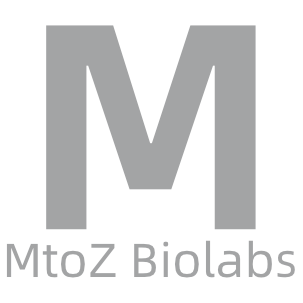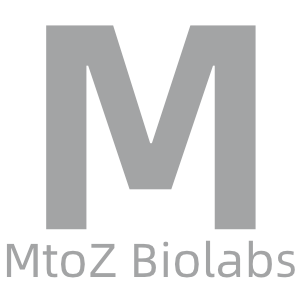Original Service
-
• Antibody-Drug Conjugate (ADC) Analysis
Antibody-Drug Conjugates (ADCs) are complexes that integrate monoclonal antibodies with small molecule drugs. Monoclonal antibodies specifically recognize and bind to antigens on the surface of cancer cells, while the conjugated small molecule drugs exert cytotoxic effects on these cancer cells. ADC analysis, crucial during the development of ADCs, evaluates their structural and functional characteristics, optimizes therapeutic efficacy, ensures the purity and stability of ADCs, and guarantees consistency d
-
Glycosylation sites are specific amino acid residues on protein molecules, typically asparagine (Asn) or serine/threonine (Ser/Thr), where glycosylation modifications occur. Glycosylation involves the covalent attachment of sugar chains to proteins, constituting an important post-translational modification (PTM). Analyzing glycosylation sites provides insights into the locations of these sites, the structures of the attached sugar chains, the extent of glycosylation, and its effects on protein function and
-
• Antibody C-terminal variation analysis
Antibody C-terminal variation refers to the amino acid sequence variation in the C-terminal region of the heavy or light chain of the antibody. These variations can include amino acid substitutions, insertions, deletions, or modifications such as glycosylation and phosphorylation. Antibody C-terminal variation analysis provides detailed information on amino acid sequence variations and detects post-translational modifications in the C-terminal region, helping to understand the impact of these variations on
-
Disulfide bond, also known as a disulfide bridge, is a chemical bond formed by the covalent bonding of two sulfur atoms, typically between two cysteine residues in a protein molecule. This bond plays a crucial role in the tertiary and quaternary structures of proteins, maintaining their stability and function. Proper formation of disulfide bonds is essential for the biological activity of proteins. Certain diseases are associated with disulfide bond abnormalities in proteins, and analyzing these abnormaliti
-
Glycosylation is integral to numerous biological processes, including protein folding, cell-cell recognition, signal transduction, and immune responses. Aberrant glycosylation patterns are linked to diseases such as cancer, infectious diseases, and diabetes. Glycan Profiling refers to the qualitative and quantitative analysis of glycans on proteins, lipids, or other biomolecules. This profiling provides insights into glycan structures, compositions, and their alterations. Glycosylation analysis is crucial f
-
Quantitative proteomics is a technique utilized for the quantitative analysis of protein expression levels to elucidate alterations in protein composition and function within cells, tissues, or organisms. This technique holds significant importance in biomedical research, aiding scientists in comprehending disease mechanisms, identifying biomarkers, and developing new therapeutic drugs. Quantitative proteomics fundamentally depends on mass spectrometry (MS) technology to accurately quantify proteins. The co
-
SWATH (Sequential Window Acquisition of All Theoretical Mass Spectra) is a high-throughput, label-free quantitative proteomics technique that combines the benefits of Data-Dependent Acquisition (DDA) and Data-Independent Acquisition (DIA). It allows for comprehensive quantification and identification of proteins in complex biological samples. The essence of SWATH technology lies in DIA, where the mass spectrometer continuously scans all peptide ions within predefined mass windows, rather than targeting spec
-
Multiple Reaction Monitoring (MRM) is a quantitative analysis technique based on tandem mass spectrometry (MS/MS) used for the selective detection and quantification of target analytes in complex biological samples. The fundamental principle involves selecting specific precursor ions and their fragment ions using two mass analyzers in the mass spectrometer, thereby enhancing specificity and sensitivity. Initially, the precursor ion (usually a peptide segment) of the target molecule is selected in the first
-
Label-Free Quantitative Proteomics (LFQ) is a method that determines the relative abundance of proteins directly using Mass Spectrometry (MS) without introducing stable isotope labels into the sample. The core principle of LFQ relies on the linear correlation between the signal intensity detected by MS and the protein concentration. LFQ quantification is primarily performed using two methods: (1) Peak Area Integration: Determines the relative abundance of each protein or peptide by calculating the peak
-
iTRAQ (Isobaric Tags for Relative and Absolute Quantitation) is a mass spectrometry-based technique used for protein quantification. By employing chemical labeling with isotope tags, iTRAQ allows for both relative and absolute quantification of proteins across up to 8 different samples simultaneously. This technology is particularly useful for analyzing proteins in complex samples such as cell lysates, tissue extracts, and serum due to its high throughput and multiplexing capabilities. As a result, iTRAQ ha
How to order?







